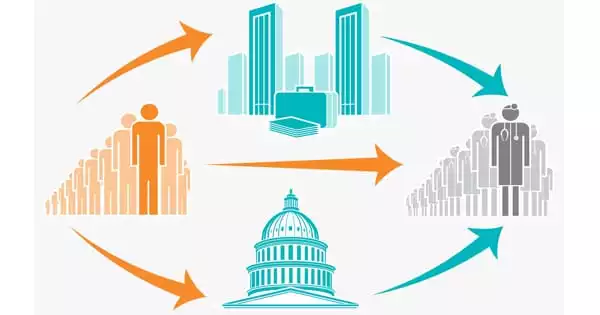Single-payer healthcare is a sort of universal healthcare in which the costs of necessary healthcare are covered by a single public system for all citizens (hence “single-payer”). A healthcare system in which every individual receives health coverage is referred to as universal coverage. This can be accomplished through a government-run health-care system, a private health-care system, or a combination of the two.
For decades, healthcare reform has been a source of contention in the United States. The terms universal healthcare coverage and single-payer system are frequently used to describe it. However, the term “single payer” may not necessarily provide clarity when defining specific policy options.
Single-payer systems can either contract for healthcare services from commercial groups (as in Canada) or own and employ healthcare resources and people (as is the case in the United Kingdom). The term “single-payer” refers to the system through which healthcare is paid for by a single public authority rather than a private authority or a combination of both.
Instead of many competing health insurance firms, a single public or quasi-public body is responsible for financing healthcare for all citizens in a single payer healthcare system. That is, everyone is covered by a single health insurance plan and has access to all necessary services, including as doctors, hospitals, long-term care, prescription drugs, dentists, and vision care.
Description
A single-payer system is one in which the government pays healthcare claims with money earned through the tax system. The only “single payer” is the government. At least 17 nations are affected, including Japan, Canada, the United Arab Emirates, Italy, and Iceland.
A single government or government-related source pays for all covered healthcare services under single-payer healthcare systems. Governments employ this technique to achieve a variety of objectives, including universal healthcare, lowering the economic burden of health care, and improving population health outcomes. The World Health Organization’s member countries approved universal healthcare as a goal in 2010, and the United Nations General Assembly adopted it as part of the 2030 Agenda for Sustainable Development in 2015.
Single-payer systems can also be created without having to cover the entire population. Even if a country has one or more single-payer schemes, it will not reach universal coverage. This is especially true in the United States, which has a mix of single-payer care for some, private coverage for others, and tens of millions of individuals who have no coverage at all.
A single-payer health system creates a single risk pool for an entire geographic or political region’s population. It also sets a unified set of guidelines for services provided, reimbursement rates, prescription costs, and minimum service standards.
Many people in the United States are covered by employer-sponsored or self-purchased health plans, including those marketed through health insurance exchanges. This means that hundreds of private insurance companies pay their members’ claims rather than a government-run single-payer system.
Single-payer health insurance is normally offered to all citizens and legal residents in prosperous countries. Examples include the National Health Service in the United Kingdom, Medicare in Australia, and Medicare in Canada.
















